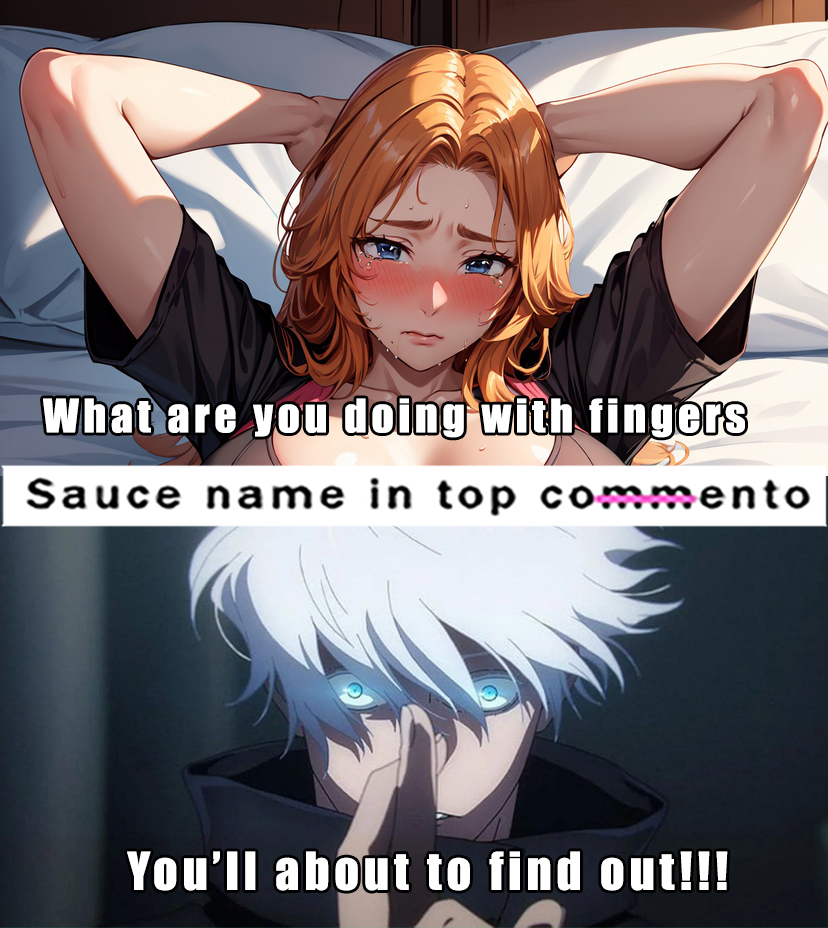Time travel anime has become a beloved sci-fi trope, renowned for its intriguing plots and dynamic character interactions. Creators in the anime world have utilized this concept in diverse and amazing ways, resulting in some of the most entertaining series within the medium. From classics like Steins; Gate to recent hits like Re: Zero, time travel anime consistently deliver top-notch stories that explore complex philosophical questions.
In this article, we’ll highlight the 10 best time travel anime that no fan should miss. Each selection offers a thought-provoking narrative, fully realized characters, and a creative approach to the concept of traversing through time. Whether it’s witnessing characters rewrite their own history or encountering time policemen tasked with maintaining proper chronology, these titles exemplify why the genre resonates so strongly with viewers.
Please note: The article is presented in no particular ranking order.
10. Orange
Orange, a time travel anime, tells a touching teenage drama with a unique temporal twist. When Naho receives a letter from her future self at 26, she discovers a grim revelation: her new classmate, Kakeru, will tragically take his own life in the days to come. Armed with this unsettling foresight, Naho endeavors to alter fate’s course and save Kakeru, with the unwavering support of her closest friends.

Although often categorized as a romance anime, Orange garners acclaim for its sensitive portrayal of depression and mental health struggles. It adeptly follows the intricacies of relationships and the enduring weight of remorse in the wake of tragedy.
The inclusion of time travel introduces a compelling tension, questioning whether destiny is predetermined or can be reshaped through empathy and intervention.
Orange is a nice anime and manga series that blends elements of drama, romance, and science fiction. Originally a manga written and illustrated by Ichigo Takano, it was serialized in the monthly manga magazine Bessatsu Margaret from 2012 to 2015. The series was well-received, leading to an anime adaptation and several live-action films.
The story revolves around a high school girl named Naho Takamiya, who receives a letter from her future self. The letter is sent from ten years ahead, urging Naho to change specific events in order to prevent the greatest regret of her life.
Future Naho instructs her younger self to watch over a new transfer student, Kakeru Naruse, and make sure he is not left alone. In the future, Kakeru is no longer alive, and the group of friends he was a part of harbors deep regrets about not being able to save him.

The series explores themes of regret, friendship, adolescence, mental health, and the impact of small decisions on our lives. The characters are well-developed and relatable, each struggling with their own personal challenges and insecurities. Naho, the protagonist, grows throughout the series as she grapples with the responsibility of altering the future. Kakeru, the troubled transfer student, becomes central to the story as his complex emotional state unfolds.
Ichigo Takano’s art style is simple yet emotive, effectively conveying the emotional depth of the characters and the narrative. The use of facial expressions and body language enhances the storytelling, drawing readers deeply into the characters’ experiences.
The anime adaptation of “Orange” aired in 2016, produced by TMS Entertainment. It closely follows the manga’s storyline and successfully captures the emotional essence of the original work. The anime received positive reviews for its faithful adaptation, beautiful animation, and heartfelt portrayal of the characters’ struggles.
Orange has been praised for its realistic portrayal of emotional issues faced by teenagers, such as depression, grief, and self-doubt. Its exploration of mental health themes resonated with audiences, contributing to its popularity both in Japan and internationally.
In addition to the anime adaptation, “Orange” also inspired two live-action films released in 2015 and 2016. These films further expanded the series’ reach and received positive feedback for their faithful interpretation of the source material.
Orange is a compelling series that combines poignant storytelling with relatable characters and thought-provoking themes. Whether experienced through the original manga, the anime adaptation, or the live-action films, “Orange” offers a touching exploration of friendship, regret, and the transformative power of reaching out to others in times of need. It’s recommended for fans of drama and romance who appreciate stories with emotional depth and genuine character development.
9. Link Click
Link Click, a Chinese anime-inspired series, offers a refreshing take on the sci-fi genre. Protagonist Cheng Xiaoshi discovers the extraordinary ability to traverse through time simply by capturing photographs.
Teaming up with Lu Guang, they form a time-traveling detective agency, getting on a journey to mysteries spanning various epochs of history. As their agency expands in prowess, Cheng and Guang bear witness to pivotal moments in China’s past, which in turn informs their understanding of the present.

The use of snapshot time jumps in Link Click transcends mere narrative convenience, imbuing the series with an immersive atmosphere and heightened emotional resonance. By transporting our protagonists into poignant historical events, these time-traveling adventures serve to deepen their perspectives and enrich the storytelling.
Through its exploration of time travel, Link Click looks into the intricate web of cause and effect, showcasing how choices and moments can reverberate through the lives of individuals across generations.
“Link Click” is a Chinese web novel written by Sadon Jaber (撒旦的春天) and illustrated by Mi Er (米儿). It falls under the genres of action, adventure, fantasy, and supernatural.
The story follows the protagonist Yu Qiu, a young man who discovers a mysterious app called “Link Click” on his phone. This app allows him to travel to parallel worlds where he must complete missions and face challenges. Each world presents a unique scenario and set of tasks for Yu Qiu to overcome. As he navigates through these parallel dimensions, Yu Qiu begins to reveal the secrets behind the “Link Click” app and its connection to his own life.
Link Click explores themes of adventure, exploration, and personal growth. The concept of parallel worlds introduces a sense of mystery and unpredictability to the story, as each new dimension offers different landscapes, characters, and conflicts. The protagonist’s journey through these worlds is not only about completing missions but also about understanding himself and the nature of reality.
Yu Qiu is the central character of the story, a relatable and determined protagonist who adapts quickly to the challenges presented by the “Link Click” app. Other characters encountered in each world vary based on the scenario, providing a diverse range of interactions and relationships.
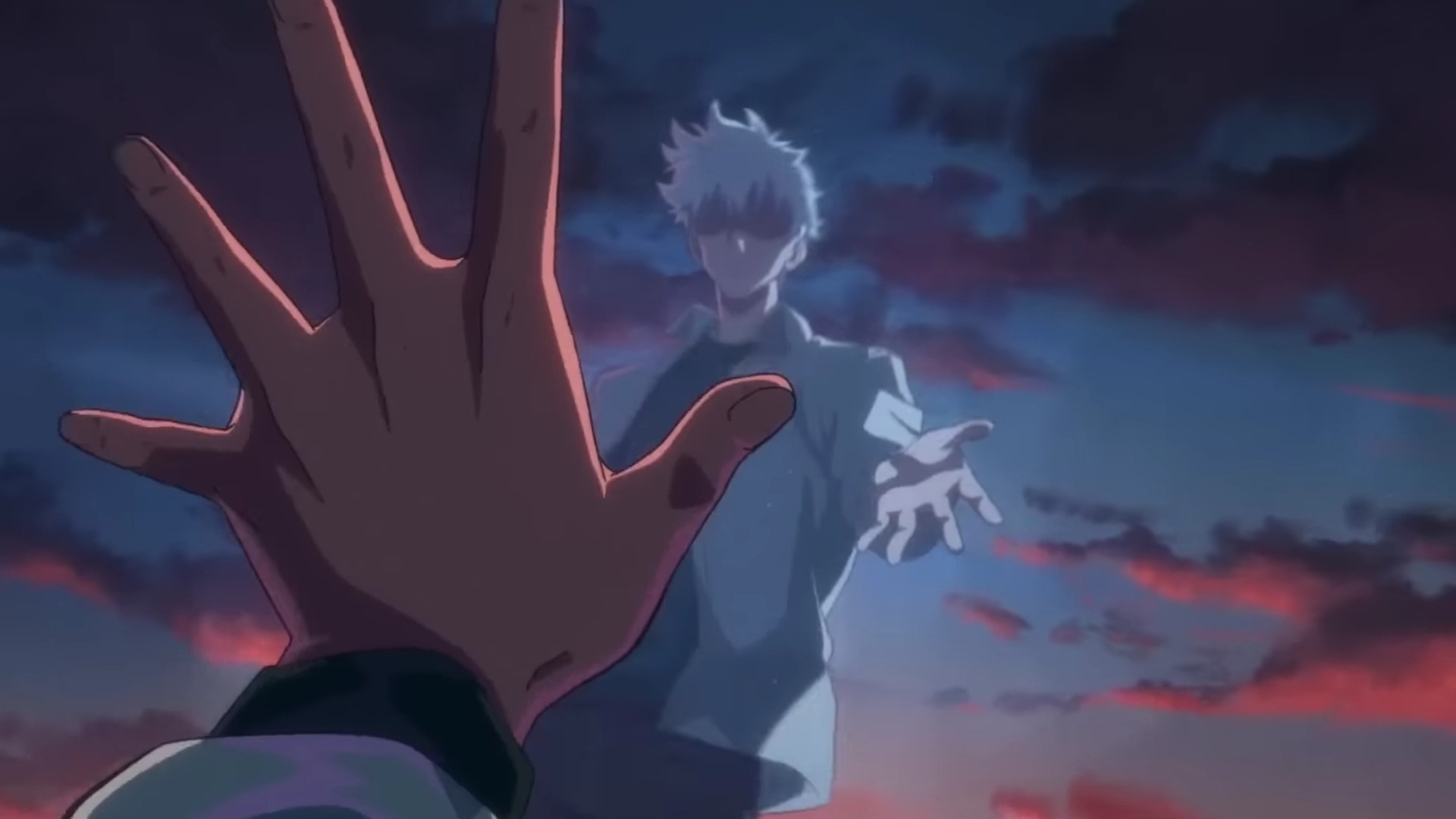
The writing style of “Link Click” is engaging and fast-paced, keeping readers hooked with its blend of action, mystery, and fantasy elements. The novel has garnered a positive reception within the Chinese web novel community, praised for its creative premise and imaginative storytelling.
Link Click has gained popularity not only as a web novel but also as a basis for other media adaptations, such as manhua (Chinese comic) adaptations. The story’s intriguing concept and dynamic plot make it well-suited for visual adaptations, allowing fans to further immerse themselves in the world of “Link Click.”
“Link Click” offers readers an exciting journey through parallel worlds, blending elements of fantasy and adventure with themes of self-discovery and personal transformation. Its unique premise and well-paced storytelling make it a recommended read for fans of action-packed narratives with a touch of mystery and supernatural intrigue.
In addition to Yu Qiu, “Link Click” introduces a variety of characters across different parallel worlds, each contributing to the richness of the story. Some characters serve as allies, aiding Yu Qiu in his missions, while others present formidable challenges or mysteries to reveal. As Yu Qiu navigates through these worlds, he encounters individuals with unique backgrounds, motivations, and personalities, adding depth and complexity to his adventures.
One intriguing aspect of the novel is the evolving relationships Yu Qiu forms with these characters. Whether it’s forming bonds of friendship, overcoming conflicts, or unearthing hidden truths, the interactions between Yu Qiu and the supporting cast contribute significantly to his character development and the narrative arc.
Link Click not only explores the physical exploration of parallel worlds but also goes into existential themes. The concept of multiple realities raises questions about the nature of existence, destiny, and the interconnectedness of different life paths. Through Yu Qiu’s journey, readers are prompted to contemplate their own choices and the potential consequences of decisions made in different circumstances.
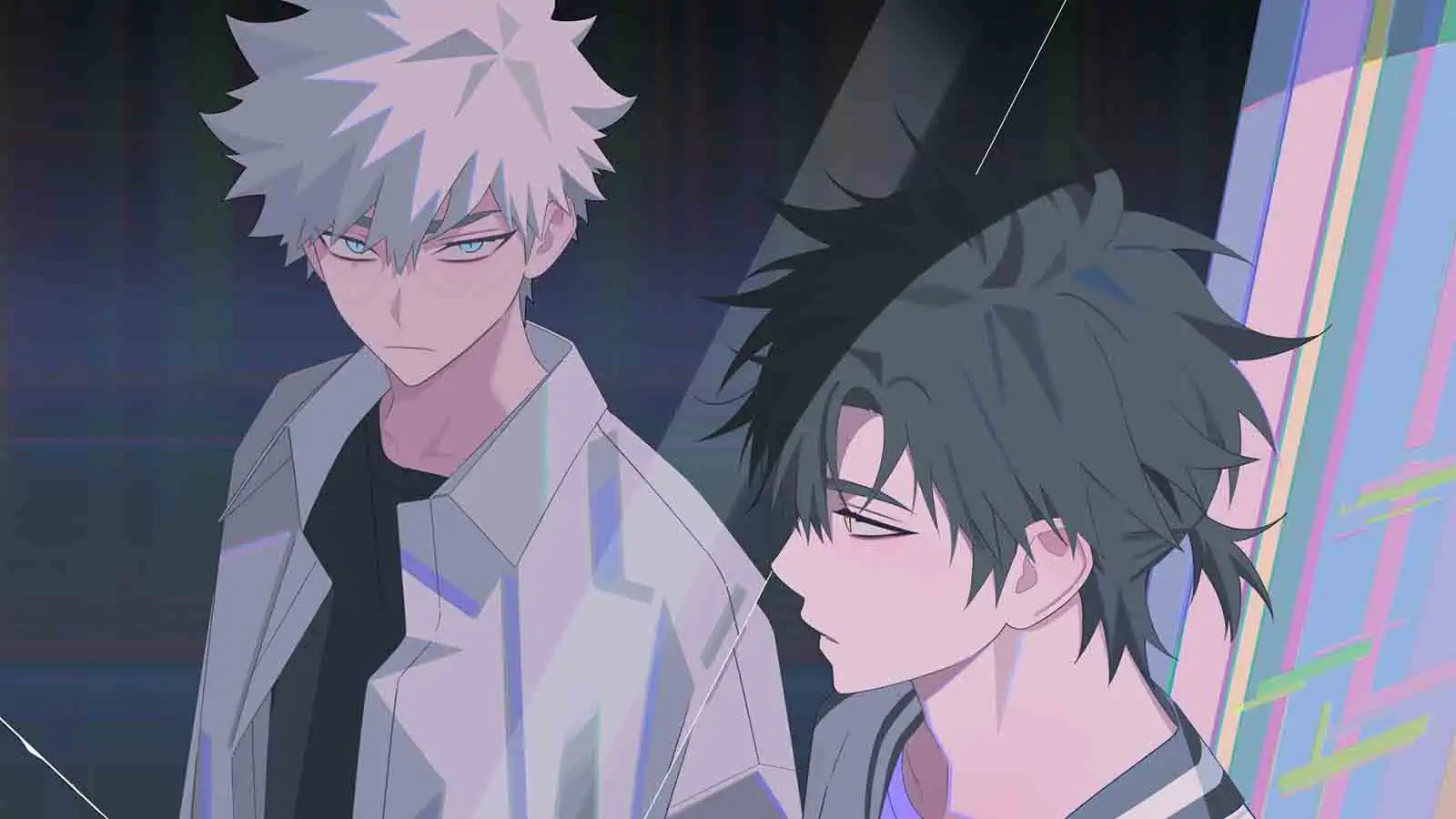
The theme of personal growth is intricately woven into the narrative, as Yu Qiu confronts his fears, doubts, and limitations while finding through increasingly challenging dimensions. The exploration of identity and purpose adds a thought-provoking layer to the action-packed storyline.
Since its inception as a web novel, “Link Click” has expanded its reach through various adaptations. The transition to the Manhua (Chinese comic) format allows fans to experience the visual depiction of Yu Qiu’s adventures and encounter the diverse landscapes and characters of each parallel world.
Furthermore, the potential for multimedia adaptations, such as animation or live-action series, highlights the story’s broad appeal and marketability. Visual adaptations often attract new audiences and provide existing fans with fresh perspectives on the beloved source material.
Link Click remains a popular and well-received web novel within the Chinese literary scene. Its success underscores the enduring fascination with themes of parallel universes, supernatural phenomena, and personal transformation.
Looking ahead, the ongoing serialization of “Link Click” and potential developments in its adaptation journey suggest a promising future for the franchise. Whether through literary expansions, visual media, or interactive platforms, fans can anticipate further explorations into the beautiful; worlds crafted by Sadon Jaber.
Link Click invites readers into a thrilling realm of parallel dimensions, where action-packed adventures converge with profound reflections on identity and destiny. Its diverse characters, engaging themes, and multimedia adaptations ensure that the story continues to grab audiences and inspire imaginations well beyond the confines of traditional storytelling.
8. The Girl Who Leapt Through Time
The Girl Who Leapt Through Time, hailed as a modern anime classic, garnered widespread acclaim upon its release. This time travel anime follows the journey of Makoto Konno, who discovers the extraordinary ability to leap backward in time and manipulate past events. Initially using her newfound power for trivial fixes and avoiding minor mishaps, Makoto’s cavalier approach is tested as she realizes the far-reaching consequences of her actions on others and their destinies.
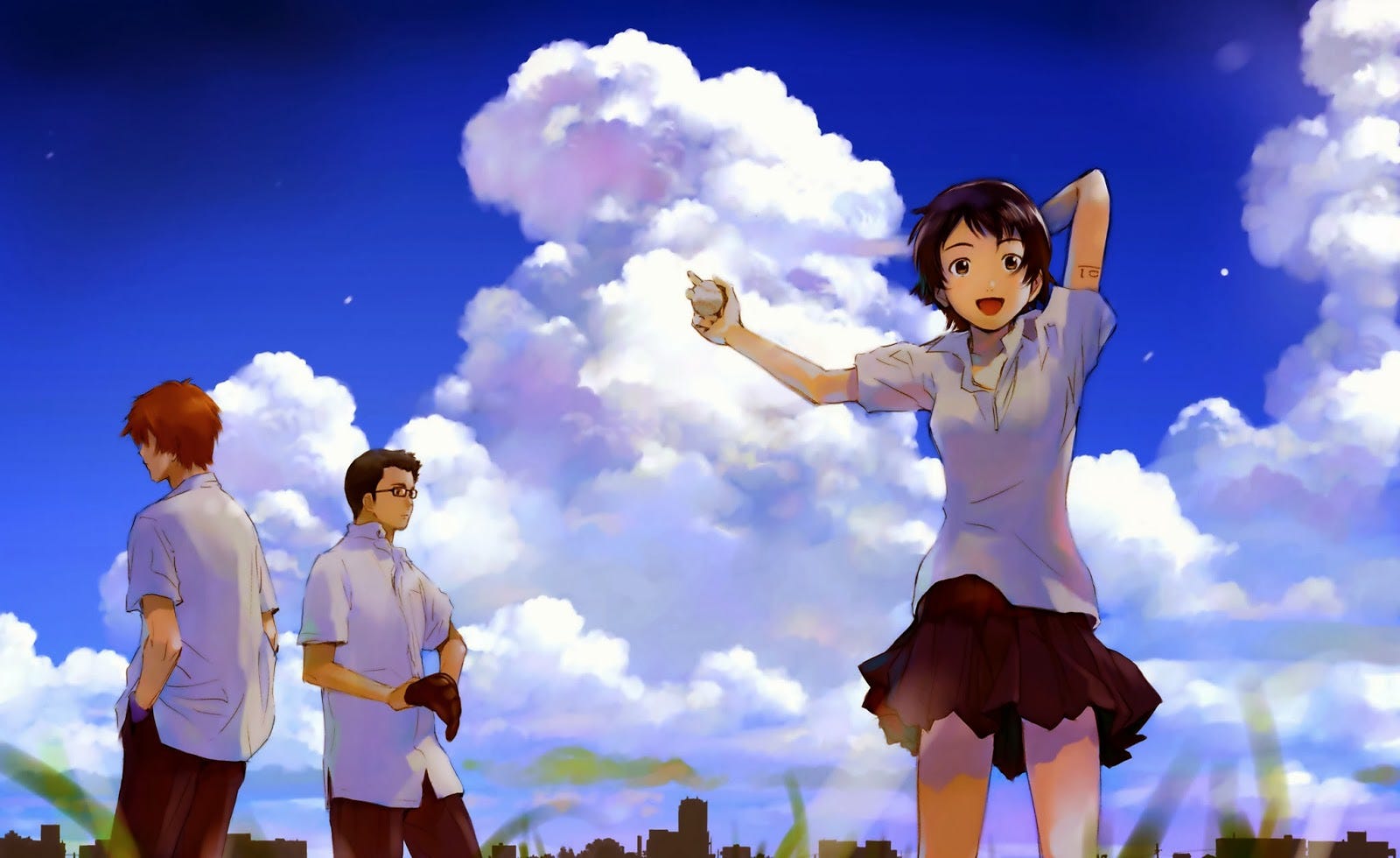
Distinguished by its breathtaking animation and richly developed characters, this anime film looks into the ethical dilemmas inherent in altering fate for personal gain. It looks into the profound notion that even with knowledge of the future, acceptance of its outcomes remains elusive. At its core, The Girl Who Leapt Through Time is an emotionally resonant exploration of adolescence and the invaluable lessons learned through adversity.
“The Girl Who Leapt Through Time” (時をかける少女, Toki o Kakeru Shōjo) is a highly acclaimed Japanese animated film directed by Mamoru Hosoda, released in 2006. This film is based on the 1967 novel of the same name by Yasutaka Tsutsui, but it reimagines the story with a modern twist, incorporating elements of science fiction and romance. The film has garnered significant praise for its engaging narrative, emotional depth, and beautiful animation.
The story revolves around a high school girl named Makoto Konno, who discovers she has the ability to leap through time after a mysterious encounter in her school’s science lab. Initially, Makoto uses her newfound power for trivial things like fixing embarrassing moments or avoiding homework deadlines. However, as she goes deeper into her ability, Makoto realizes the consequences of her actions and the impact they have on the lives of those around her.
As Makoto repeatedly leaps through time, she begins to understand the complexities and responsibilities that come with altering the past. Her carefree attitude towards time travel shifts as she grapples with the moral dilemmas posed by her actions. The story is not just about time-travel but also about friendship, growing up, and the importance of cherishing each moment.

The film explores several themes that resonate deeply with its audience. One prominent theme is the passage of time and the fleeting nature of moments. Makoto’s ability to leap through time highlights the desire to control time and the consequences of tampering with it.
Friendship and human connections are also central to the narrative. Makoto’s relationships with her friends, Chiaki and Kousuke, undergo transformations as she navigates the complexities of her time-travel adventures. The film beautifully captures the bittersweet essence of adolescence and the importance of cherishing the present.
Visually, “The Girl Who Leapt Through Time” showcases Hosoda’s signature style, characterized by detailed backgrounds, expressive character designs, and fluid animation. The film’s use of colors and imagery effectively conveys the emotional tone of each scene, from playful and lighthearted moments to poignant and introspective ones.
Mamoru Hosoda, known for his work on other acclaimed anime films like “Summer Wars” and “Wolf Children,” brings a unique perspective to “The Girl Who Leapt Through Time.” His storytelling prowess and ability to blend fantasy with relatable human experiences have garnered him international recognition as one of the leading directors in contemporary anime.
Upon its release, “The Girl Who Leapt Through Time” received widespread critical acclaim and won numerous awards, including the Japan Academy Prize for Animation of the Year. The film’s success contributed significantly to Hosoda’s reputation as a visionary director and further solidified his influence in the anime industry.
“The Girl Who Leapt Through Time” is a nice and thought-provoking film that transcends its genre. With its rich themes, engaging characters, and masterful animation, the film continues to resonate with audiences worldwide and remains a standout achievement of animated storytelling. Whether you’re a fan of anime or simply appreciate compelling narratives, this film is definitely worth experiencing.
7. Erased
Also known as Boku Dake ga Inai Machi in Japan, Erased is a gripping thriller anime centered around 29-year-old Satoru. When a tragic event unfolds in his present timeline, Satoru’s latent ability activates, hurling him back 18 years into his own childhood. Armed with this unexpected chance, he sets out to the truth behind a long-buried incident and alter the grim future that awaits him.

Heart-pounding and irresistibly binge-worthy, Erased skillfully employs its time travel premise to look into Satoru’s haunting regrets from the past. Seamlessly blending mystery genre conventions with weighty real-world issues such as corruption and child abuse, the series weaves a narrative that is as emotionally profound as it is suspenseful. Amidst the darkness, Erased offers sporadic moments of innocence and hope, adding layers of complexity to its fascinating storyline.
“Erased” (Boku Dake ga Inai Machi) is a Japanese manga series written and illustrated by Kei Sanbe. It was later adapted into an anime television series directed by Tomohiko Itō and produced by A-1 Pictures. The anime adaptation aired in 2016 and consists of 12 episodes. This gripping mystery thriller has garnered widespread acclaim for its suspenseful plot, well-developed characters, and emotionally resonant storytelling.
The story follows Satoru Fujinuma, a struggling manga artist who possesses a peculiar ability he calls “Revival,” which allows him to go back in time moments before a life-threatening incident occurs. After encountering a tragic event, Satoru finds himself thrown back 18 years into the past to his childhood, just before a series of abductions and murders occurred in his hometown.
Realizing he has been sent back to prevent these tragedies, Satoru gets on a mission to uncover the identity of the culprit, who was responsible for these crimes and the murder of his classmate, Kayo Hinazuki. Through his journey, Satoru reconnects with his past self and attempts to alter the course of history to save those he cares about.

“Erased” goes into the themes of trauma, redemption, and the importance of confronting one’s past. Satoru’s journey not only involves solving a mystery but also confronting unresolved issues from his childhood. The series masterfully intertwines elements of time travel with psychological depth, exploring how our past experiences shape our present selves.
The motif of “revival” serves as a metaphor for second chances and the ability to change fate. Satoru’s determination to alter the future underscores the narrative’s message about resilience and the power of human agency.
One of the strengths of “Erased” lies in its well-rounded characters. Satoru’s character undergoes significant growth as he grapples with his past trauma and strives to protect those he loves. The relationships he forms with characters like Kayo and other childhood friends are poignant and beautifully portrayed, adding emotional depth to the narrative.
The series excels in building suspense and maintaining a tense atmosphere throughout. Each episode reveals new clues and twists, keeping viewers on the edge of their seats. The storytelling is skillfully executed, with well-paced reveals that contribute to the mystery.
Visually, Erased features crisp animation and evocative art direction that captures the mood and tone of the story. The character designs are expressive, and the use of lighting and color enhances the dramatic impact of key scenes. The soundtrack, composed by Yuki Kajiura, complements the emotional intensity of the narrative, further immersing viewers in the story’s gripping atmosphere.
Erased has received positive reviews from both critics and audiences alike. The anime adaptation was praised for its compelling storyline, well-crafted suspense, and nuanced characterization. While some viewers noted deviations from the manga’s ending, the series remains a standout within the mystery and thriller genres.
Erased is a must-watch for fans of suspenseful storytelling and character-driven narratives. With its nice plot, relatable characters, and themes of resilience and redemption, the series leaves a lasting impact and continues to be celebrated as a standout entry in anime mysteries. Whether you’re a seasoned anime enthusiast or new to the genre, “Erased” promises an engaging and emotionally rewarding viewing experience.
6. Re:Zero
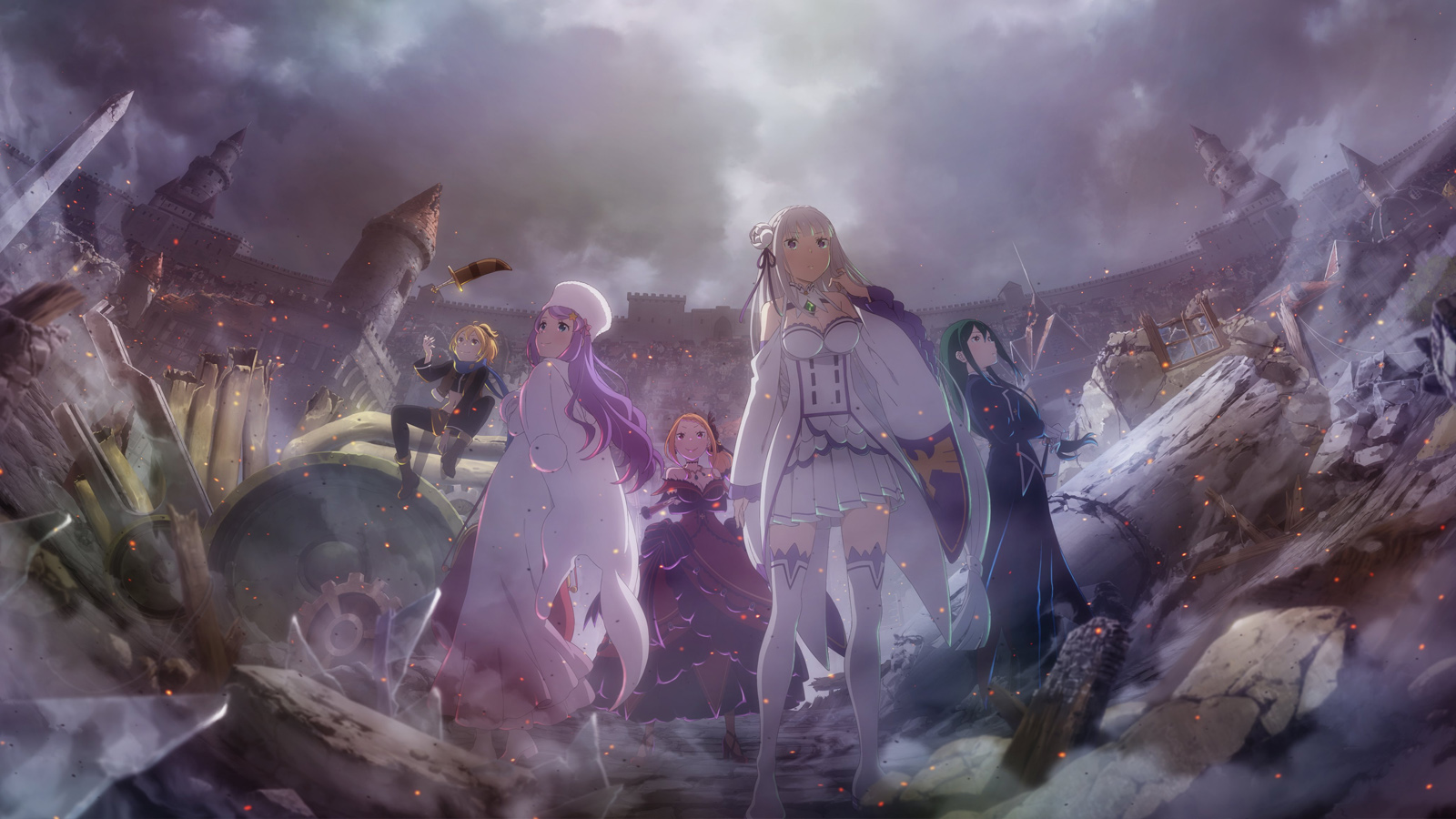
Re:Zero, an exceptional time travel anime, seamlessly merges psychological fantasy adventure with the tragic motif of a time loop. When Subaru Natsuki finds himself abruptly transported to a fantastical reminiscent of a video game, he initially views it as a stroke of luck. However, his optimism is short-lived as he meets gruesome deaths, only to be thrust back to an earlier moment in time, cursed to relive events while retaining memories of potential futures.
While the prospect of witnessing Subaru’s repeated deaths might seem repetitive, each occurrence unfolds with heightened emotional intensity. As Subaru gradually looks at the rules governing this enigmatic phenomenon, viewers are drawn into his relentless pursuit of breaking free from the suffocating grip of the time loop. Through alliances, self-sacrifice, and enduring hardship, Subaru follows a perilous path toward liberation, his journey marked by profound moments of suffering and growth.
“Re:Zero − Starting Life in Another World” (Re:Zero kara Hajimeru Isekai Seikatsu) is a Japanese light novel series written by Tappei Nagatsuki and illustrated by Shinichirou Otsuka. The series has been adapted into an immensely popular anime television series produced by White Fox, with the first season airing in 2016 and subsequent seasons following. “Re:Zero” has gained a dedicated fan base worldwide due to its complex narrative, well-developed characters, and unique take on the isekai (another world) genre.
The story follows Subaru Natsuki, an ordinary high school student who finds himself transported to a fantasy world. Upon arriving, Subaru discovers that he possesses the ability to return to a specific “checkpoint” upon death, effectively resetting time whenever he dies. Determined to uncover the mysteries of his newfound power and make a difference in this new world, Subaru becomes entangled in a series of increasingly dangerous and intricate situations.
As Subaru navigates the challenges of this unfamiliar realm, he forms alliances with various characters, including Emilia, a half-elf girl with a mysterious past, and Rem and Ram, twin maids serving at the Roswaal mansion. However, Subaru’s journey is fraught with peril, and his ability to reset time comes at a heavy psychological cost, forcing him to confront his own weaknesses and vulnerabilities.
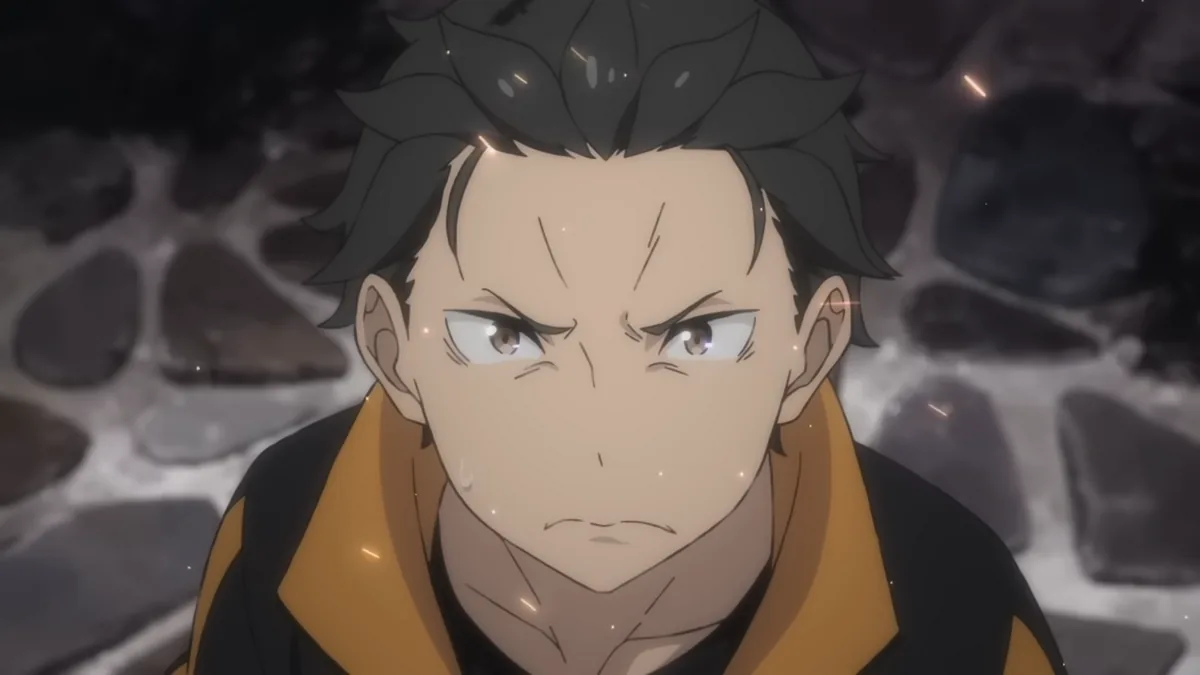
“Re:Zero” explores themes of resilience, redemption, and the consequences of one’s choices. Subaru’s ability to “respawn” after death provides a unique perspective on the impact of decisions and the burden of responsibility. The series goes into existential questions, examining the nature of heroism and the complexities of human relationships.
The concept of “return by death” serves as a central motif, highlighting Subaru’s emotional and psychological struggles. The narrative challenges typical isekai tropes by emphasizing the darker, more introspective aspects of living in a fantastical world.
One of the standout aspects of “Re:Zero” is its character development. Subaru undergoes significant growth throughout the series, evolving from an impulsive and naive protagonist to a more introspective and determined individual. The supporting cast is equally compelling, with each character harboring their own secrets and motivations.
The series boasts intricate world-building, introducing diverse cultures, political factions, and supernatural elements. The setting feels immersive and expansive, with attention to detail in establishing the rules and dynamics of the fantasy world.
Visually, “Re:Zero” features dynamic animation that captures the intensity of action sequences and the emotional depth of character interactions. The art direction is detailed and atmospheric, enhancing the fantastical ambiance of the series. The soundtrack, composed by Kenichiro Suehiro, complements the mood shifts and narrative tension, further immersing viewers in the story’s richly crafted universe.
Re:Zero has received critical acclaim for its engaging storyline, nuanced characters, and thematic depth. The anime adaptation has been praised for its faithful adaptation of the source material and strong voice-acting performances. The series has spawned numerous merchandise, spin-offs, and a dedicated fan following.
Re:Zero − Starting Life in Another World” stands out as a compelling and thought-provoking addition to the isekai genre. With its complex narrative, well-rounded characters, and exploration of existential themes, the series offers a nice viewing experience for anime enthusiasts. Whether you’re drawn to fantasy adventures or character-driven dramas, “Re: Zero” delivers a unique and rewarding journey through its richly imagined world.
5. Steins:Gate
No compilation of time travel anime would be complete without mentioning the beloved series, Steins;Gate. The eccentric mad scientist Rintaro Okabe stumbles upon the discovery of time travel by accident, only to realize that the universe actively seeks to rectify any alterations made to the past. When his friend Mayuri becomes tragically fated to die, Okabe gets on a desperate mission, utilizing the ability to send text messages into the past in a myriad of attempts to alter destiny.
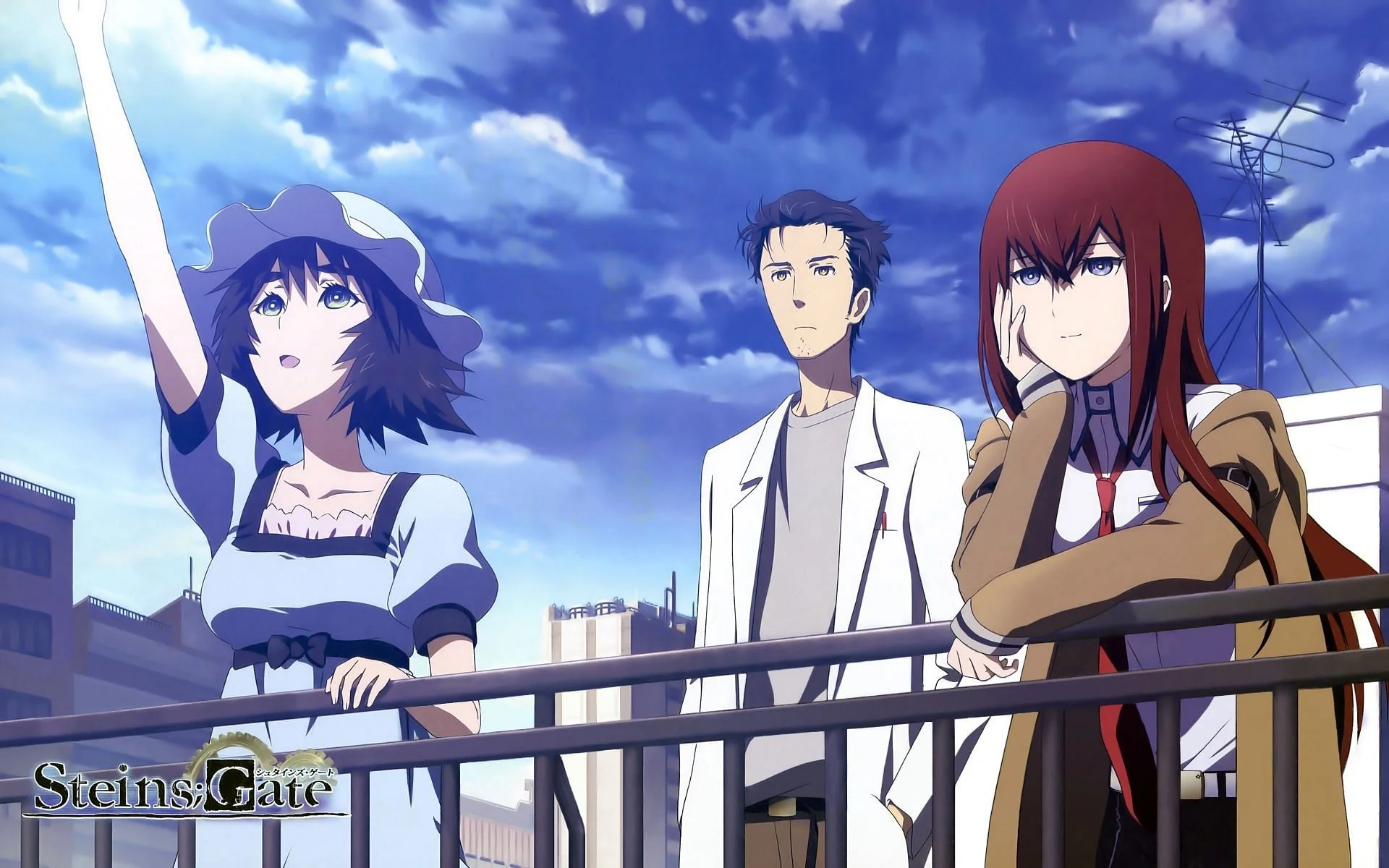
More akin to a sci-fi thriller than a conventional action anime, Steins;Gate boasts an array of cool technology, unexpected plot twists, and a cast of endearing characters that ensure the journey is nothing short of fascinating. looking into the complexities of divergent timelines and the butterfly effect, this modern classic remained a perennial favorite among anime enthusiasts long after its initial release in 2011.
“Steins;Gate” is a critically acclaimed Japanese visual novel developed by 5pb. and Nitroplus. It was later adapted into an anime television series produced by White Fox, which aired in 2011. The series is celebrated for its intricate plot, compelling characters, and exploration of complex scientific concepts, particularly time travel and its consequences.
The story centers around Rintarou Okabe, a self-proclaimed mad scientist who operates out of a makeshift laboratory with his friends in Akihabara, Tokyo. Okabe becomes involved in a series of experiments using a device called the “Phone Microwave,” which can send text messages back in time. However, their experiments inadvertently attract the attention of a shadowy organization known as “SERN,” leading to dangerous consequences.
As Okabe goes deeper into the mysteries surrounding time travel, he discovers the existence of “D-mail” (short for DeLorean mail), a method of sending messages to the past that can alter history. However, changing the past has unintended consequences, leading to a complex web of events and timelines that threaten the very fabric of reality.
Steins;Gate explores themes of determinism versus free will, the ethics of scientific experimentation, and the nature of cause and effect. The series raises thought-provoking questions about the implications of time travel and the ethical responsibilities that come with altering the course of history.
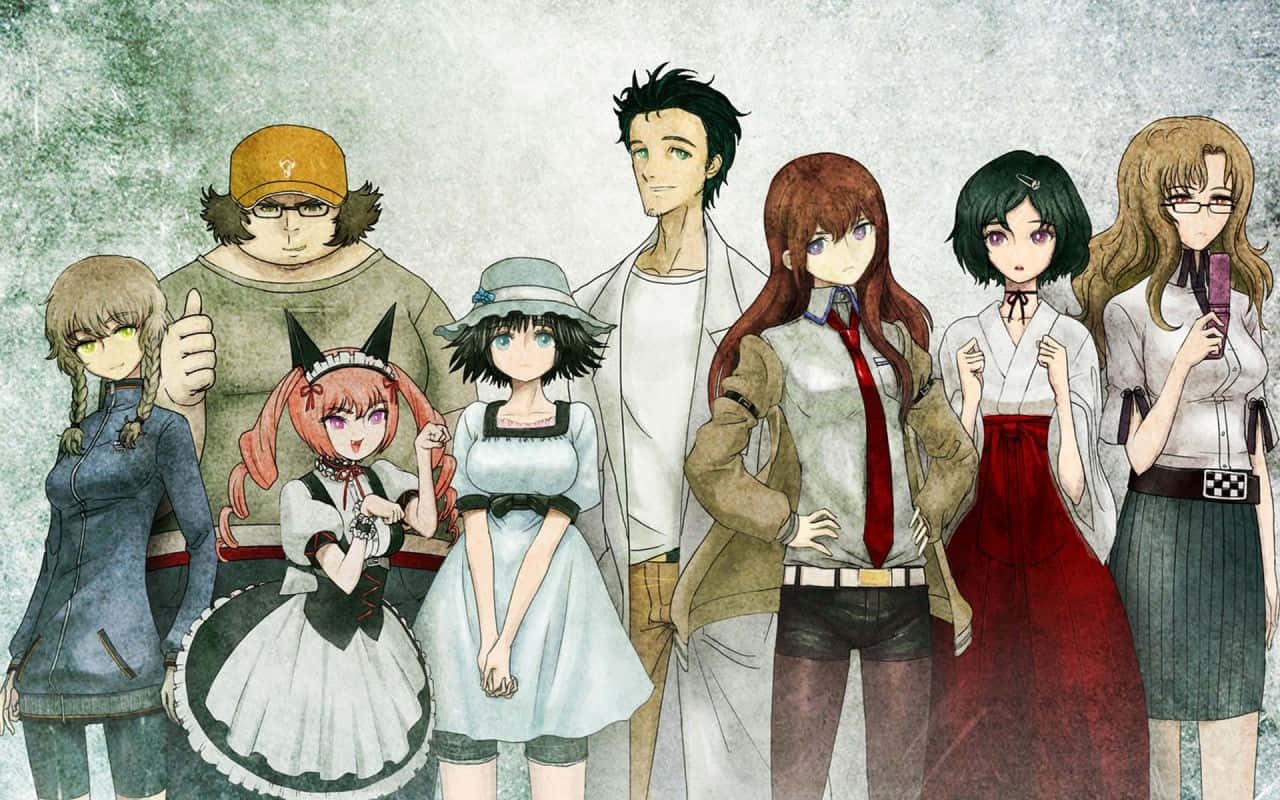
The motif of divergence and convergence is central to the narrative, highlighting the interconnectedness of events across different timelines. Okabe’s journey serves as a lens through which to examine existential dilemmas and the human desire to control destiny.
The series features a diverse and memorable cast of characters, each with their own motivations and arcs. Okabe’s evolution from a quirky eccentric to a deeply introspective and determined individual is particularly compelling. His relationships with other characters, including the brilliant scientist Kurisu Makise and the devoted Mayuri Shiina, are integral to the emotional core of the story.
Steins;Gate incorporates intricate time travel mechanics that are grounded in scientific theory. The series explores concepts like world lines, divergence numbers, and the butterfly effect, adding a layer of intellectual depth to the narrative. Despite its complex subject matter, the storytelling remains accessible and engaging, thanks to the strong characterization and pacing.
Visually, the anime adaptation of “Steins;Gate” features atmospheric art direction and fluid animation that captures the intensity of key moments. The character designs are distinctive and expressive, conveying the emotions and nuances of each scene. The soundtrack, composed by Takeshi Abo, complements the suspenseful tone of the series, enhancing the immersive experience.
Steins;Gate has received universal acclaim from both critics and audiences, praised for its gripping narrative, well-developed characters, and intelligent exploration of scientific concepts. The series has spawned multiple sequels, spin-offs, and adaptations, cementing its status as a modern classic within the realm of visual novels and anime.
Steins;Gate is a masterful blend of science fiction, drama, and character-driven storytelling. With its thought-provoking themes, intricate plot, and emotional depth, the series offers a rewarding viewing experience for fans of cerebral anime. Whether you’re drawn to mysteries of time travel or compelling character dynamics, “Steins;Gate” remains a standout entry in the genre, leaving a lasting impact on viewers long after the credits roll.
4. The Tatami Galaxy
With a distinctive art style that mirrors its innovative premise, The Tatami Galaxy revolves around an unnamed third-year university student who laments his lackluster college experience. Presented with an opportunity to revisit and potentially alter choices made over the past two years, he endeavors to rectify past mistakes, only to find himself ensnared in a cycle of disappointment and disillusionment.
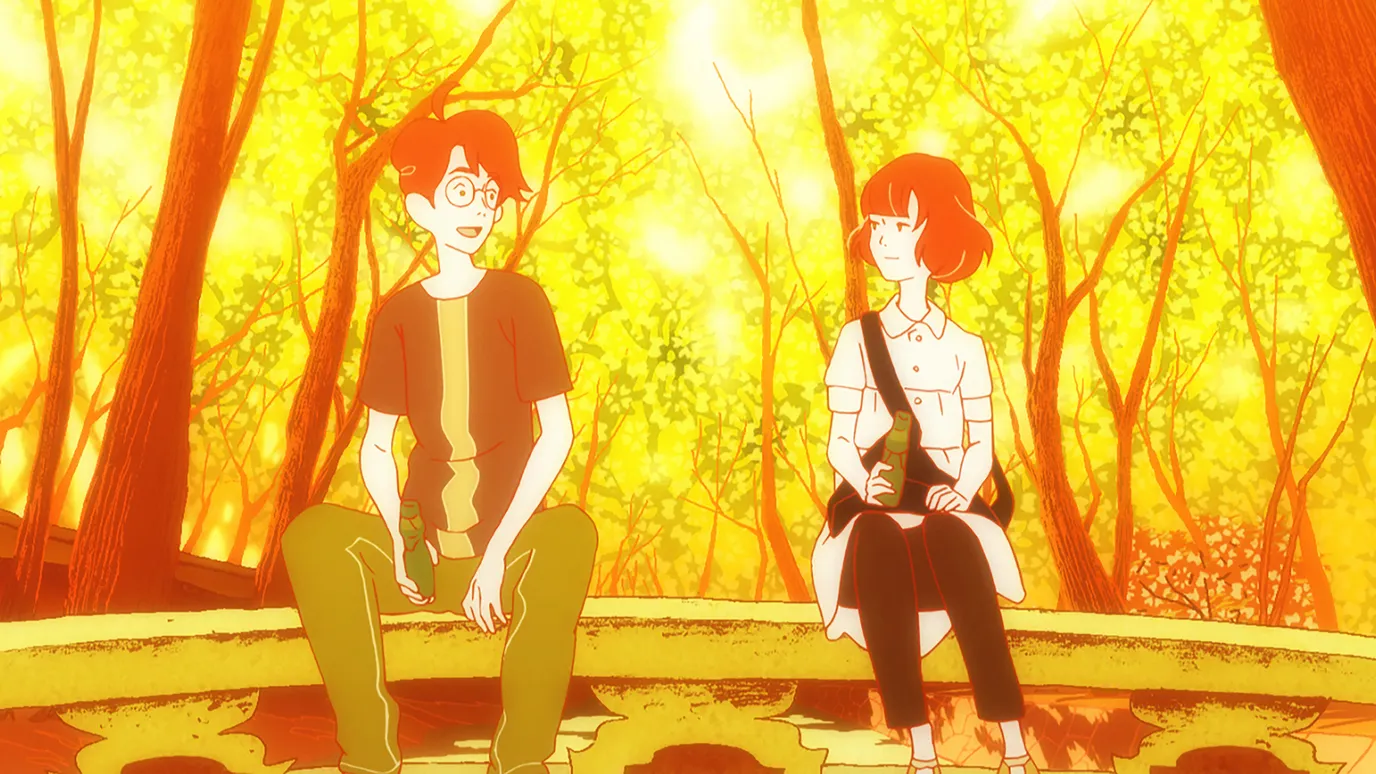
Madhouse Studios takes viewers on this dizzying odyssey through The Tatami Galaxy a surrealist dark comedy that offers an introspective of the protagonist’s quest for fulfillment and purpose. Animated with a unique visual style, the series looks deep into themes of regret, choice, and the passage of time.
Through metaphor, visual interest, and cultural nuances, The Tatami Galaxy presents poignant lessons on seizing the opportunities of youth and making the most of every moment. As the protagonist grapples with the consequences of his decisions, viewers are invited to reflect on their own lives and the paths they choose to follow.
This surrealist dark comedy employs the concept of time travel to guide themes of decision paralysis and the inherent futility of comparing reality to idealized notions of happiness. Through its succinct and crisp 11-minute episodes, the anime invites viewers to immerse themselves in a single, contemplative evening, pondering the profound existential questions it poses along the way.
The Tatami Galaxy (Yojouhan Shinwa Taikei) is a unique and thought-provoking anime television series directed by Masaaki Yuasa and produced by Madhouse. Originally airing in 2010, this 11-episode series is based on the novel by Tomihiko Morimi. “The Tatami Galaxy” stands out for its distinctive art style, nonlinear storytelling, and existential themes.
The story follows an unnamed protagonist, often referred to as Watashi (meaning “I” in Japanese), a university student who feels disillusioned with his college life. Each episode presents a different iteration of his university experience, exploring different paths and relationships. Watashi is accompanied by his enigmatic and somewhat mischievous friend Ozu, who often leads him into bizarre and surreal situations.
Throughout the series, Watashi finds himself joining various clubs, pursuing different romantic interests, and encountering a range of colorful characters. However, despite these diverse experiences, he remains unsatisfied and yearns for a more meaningful existence. As the series progresses, Watashi begins to question the nature of fate, regret, and the choices that shape his life.
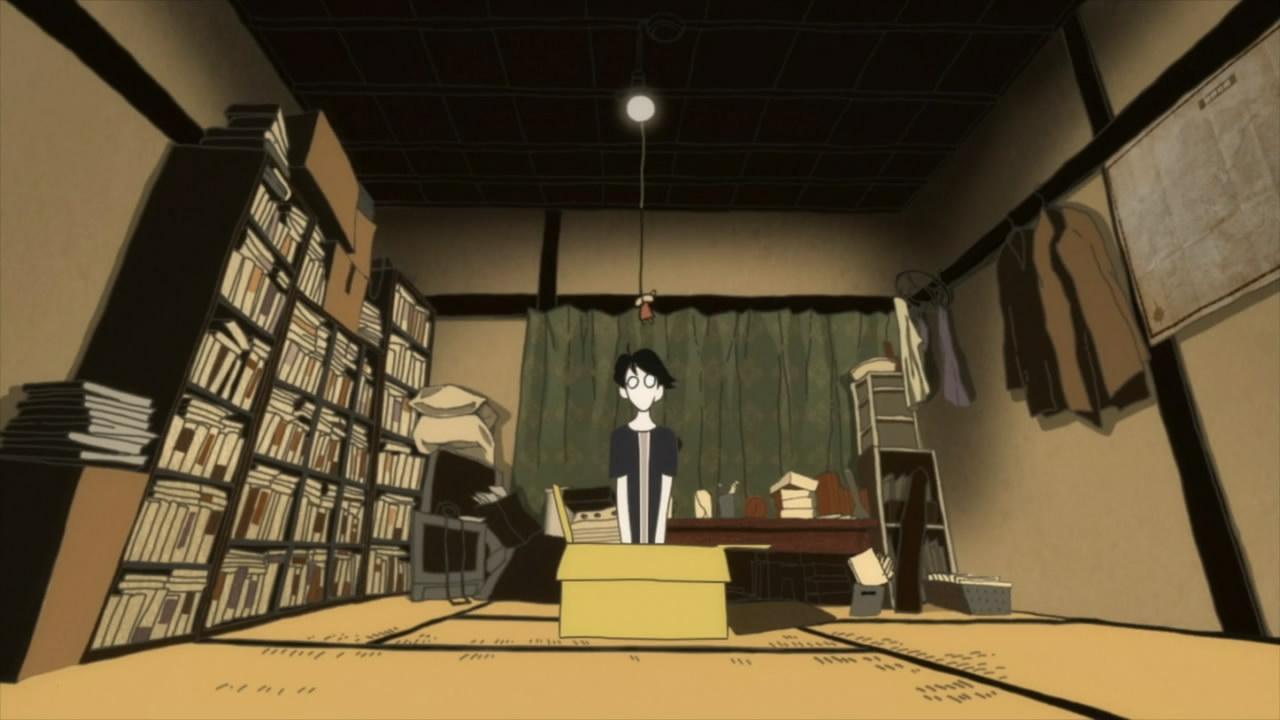
The Tatami Galaxy” follows into the themes of self-discovery, the pursuit of happiness, and the consequences of indecision. Each episode explores a parallel universe where Watashi makes different choices, highlighting the interconnectedness of seemingly disparate events. The series challenges conventional narratives and invites viewers to reflect on their own life choices and aspirations.
The motif of the “tatami galaxy” refers to the protagonist’s perception of time and space, symbolizing the confined and cyclical nature of his existence. The tatami mats also serve as a metaphor for the transient and impermanent nature of life, underscoring the series’ existential themes.
One of the standout aspects of “The Tatami Galaxy” is its visually striking art style and animation. Masaaki Yuasa’s direction infuses the series with dynamic visuals, bold colors, and surreal imagery. The character designs are distinct and expressive, capturing the idiosyncrasies of each personality. The use of fast-paced editing and inventive cinematography enhances the narrative’s energetic and introspective tone.
The series employs a nonlinear narrative structure, with each episode presenting a different “reality” based on Watashi’s choices. This unconventional storytelling approach adds layers of depth and complexity to the overarching plot, encouraging viewers to piece together the puzzle of Watashi’s existential journey.
The Tatami Galaxy features a memorable soundtrack composed by Michiru Oshima, complementing the series’ whimsical and introspective atmosphere. The voice acting performances, particularly by the protagonist and Ozu, capture the nuances of their evolving friendship and inner turmoil.
The Tatami Galaxy has received widespread critical acclaim for its innovative storytelling, thematic richness, and artistic vision. The series has gained a cult following among anime enthusiasts and remains highly regarded for its philosophical depth and unconventional approach to narrative structure.
The Tatami Galaxy is a nice and intellectually stimulating anime that challenges viewers to contemplate the nature of existence and the pursuit of happiness. With its inventive visuals, nuanced characters, and profound themes, the series offers a refreshingly unique viewing experience that continues to resonate with audiences seeking introspective and thought-provoking storytelling. Whether you’re drawn to experimental narratives or existential themes, “The Tatami Galaxy” is a must-watch for anime fans looking to explore the boundaries of storytelling in the medium.
3. Tokyo Revengers
In Tokyo Revengers, the protagonist Takemichi Hanagaki is thrust into an extraordinary situation after the mysterious death of his middle school ex-girlfriend, Hinata. Discovering his ability to travel back in time, Takemichi is transported to his middle school years with a singular mission: to infiltrate the Tokyo Manji Gang and prevent Hinata’s tragic demise. Along the way, he finds himself entangled in the gang’s internal conflicts and bitter rivalries.
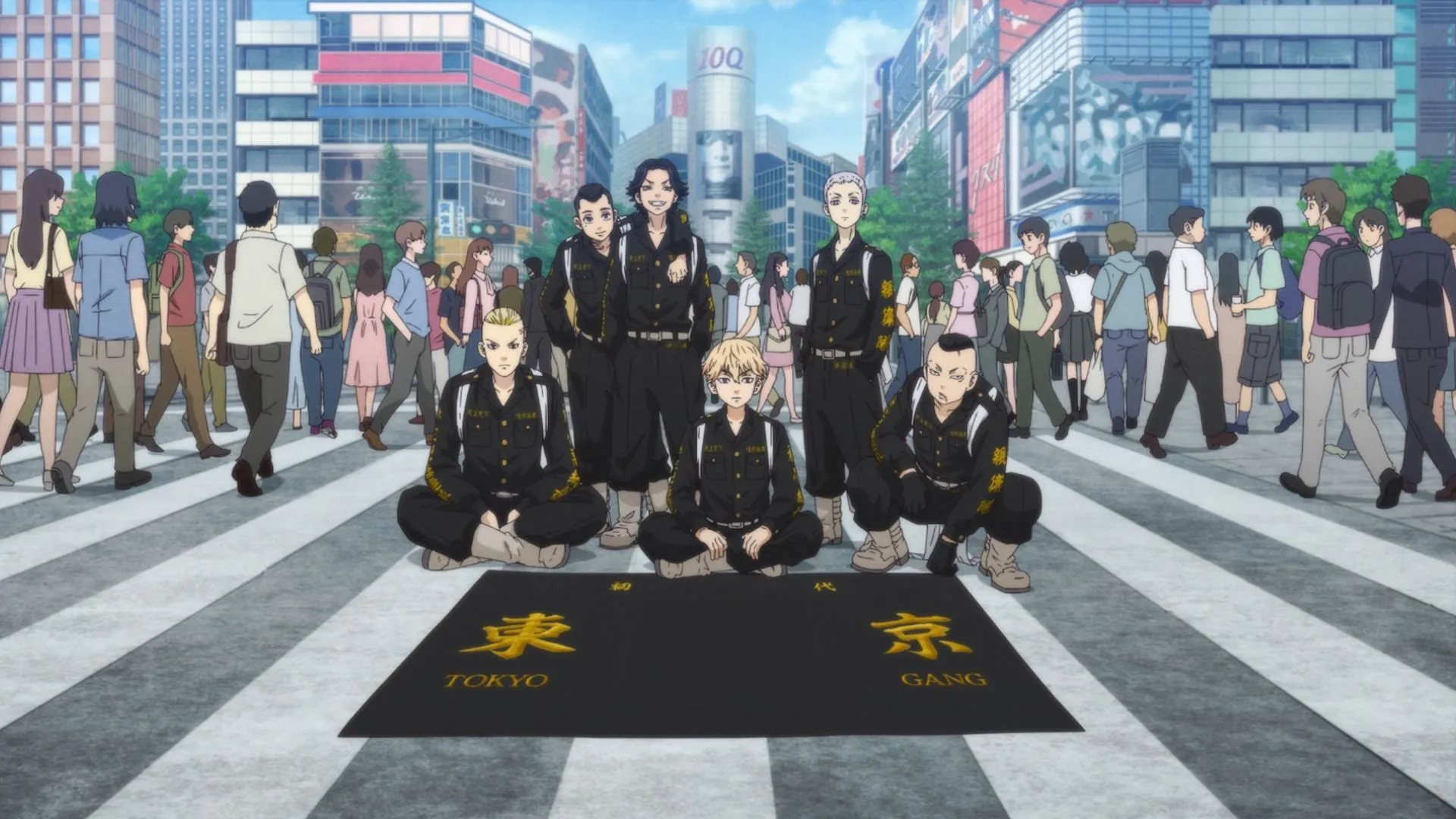
While the initial setup may seem familiar, Tokyo Revengers distinguishes itself by looking into weighty themes such as abuse and violence with a level of maturity and nuance rarely seen in similar narratives.
Through empathetic character portrayals, the series follows these complex issues, offering a poignant exploration of redemption and the possibility of atoning for past transgressions, even in the face of overwhelming adversity. Takemichi’s journey from a seemingly powerless individual to a courageous hero serves as a compelling backdrop for probing questions about the nature of redemption and the enduring impact of one’s actions.
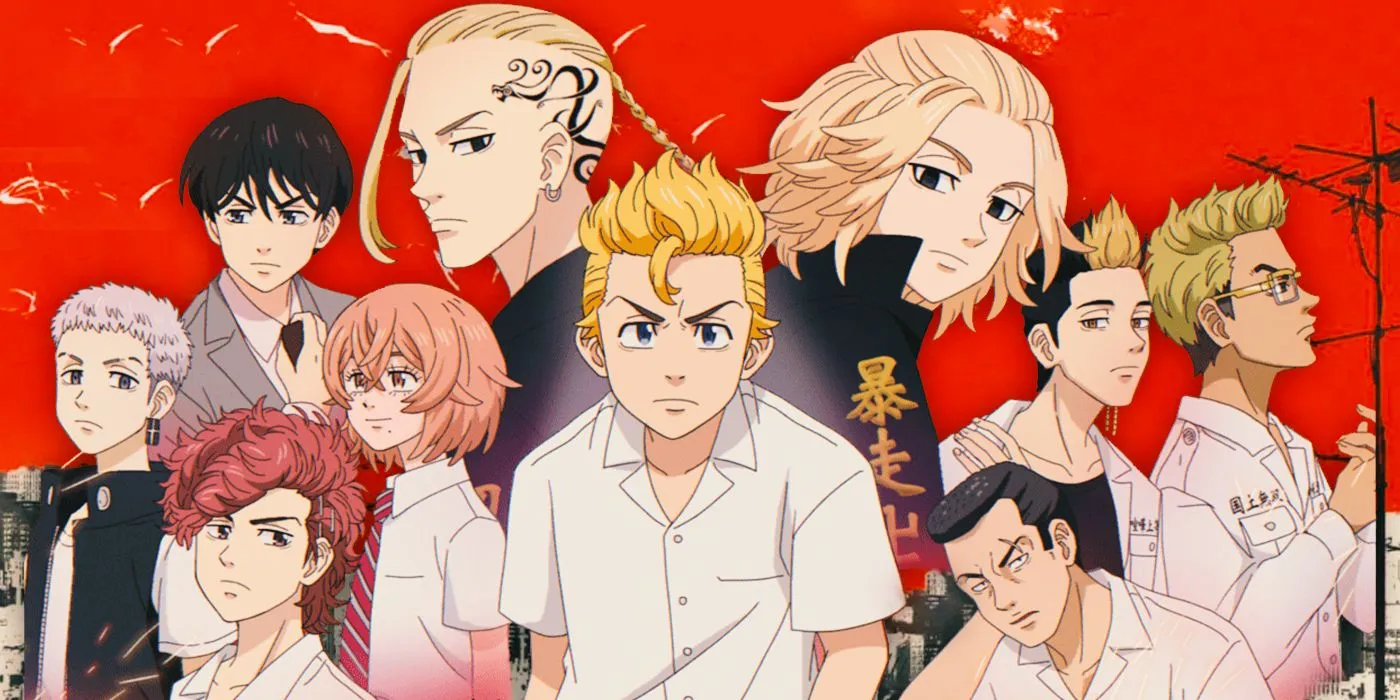
“Tokyo Revengers” (Tōkyō Ribenjāzu) is a Japanese manga series written and illustrated by Ken Wakui. It has also been adapted into a popular anime television series produced by LIDENFILMS, which premiered in 2021. “Tokyo Revengers” has garnered significant attention for its thrilling narrative, compelling characters, and exploration of themes like friendship, redemption, and the consequences of one’s actions.
The story centers around Takemichi Hanagaki, a disheartened 26-year-old who learns that his middle school girlfriend, Hinata Tachibana, has been murdered by the Tokyo Manji Gang, a notorious criminal organization. After an unexpected encounter with a train, Takemichi finds himself transported back in time to his middle school days, giving him a chance to change the future and prevent Hinata’s death.
In this new timeline, Takemichi resolves to infiltrate the Tokyo Manji Gang and alter the course of history. Along the way, he reconnects with his middle school friends, including the formidable gang leader, Mikey, and the influential strategist, Draken. Takemichi must navigate dangerous alliances, face formidable adversaries, and confront his own personal demons in order to protect his loved ones and find a sense of purpose.
“Tokyo Revengers” explores themes of fate, second chances, and the ripple effects of one’s choices. Takemichi’s journey challenges him to confront his own shortcomings and regrets while striving to create a better future. The series also goes into the dynamics of loyalty, honor, and the complexities of gang culture, presenting multifaceted characters with their own motivations and struggles.
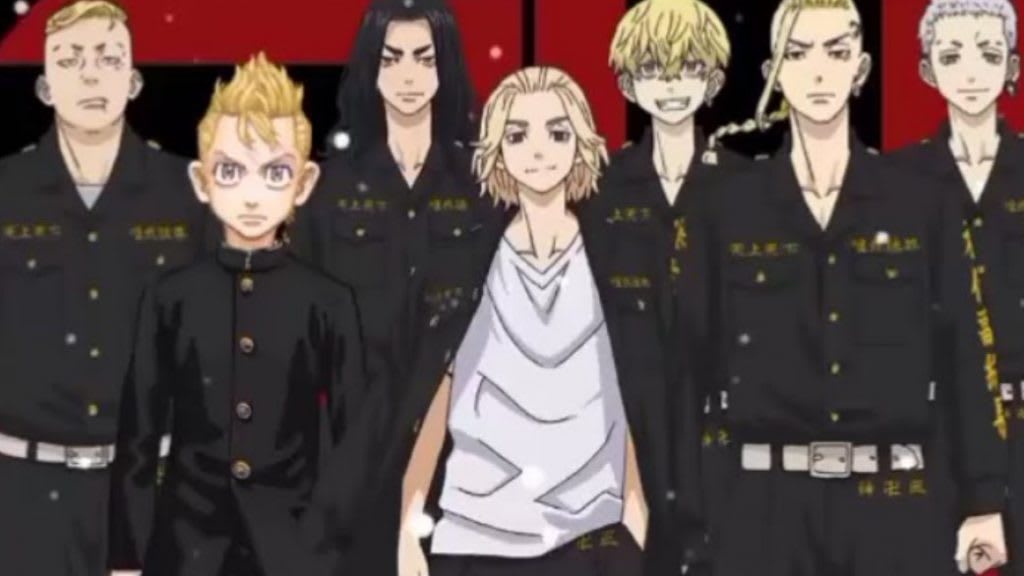
The motif of time travel serves as a narrative device to highlight the importance of seizing opportunities and taking responsibility for one’s actions. Takemichi’s experiences in the past allow him to gain new perspectives on life and relationships, ultimately shaping his growth as a protagonist.
One of the strengths of “Tokyo Revengers” lies in its well-developed characters. Takemichi’s evolution from a disillusioned adult to a determined and resourceful young man is compelling to witness. The supporting cast, including members of the Tokyo Manji Gang and Takemichi’s friends, undergo their own arcs and contribute to the series’ emotional depth.
The series features intense action sequences and dramatic confrontations, adding excitement and tension to the narrative. The balance between character-driven moments and adrenaline-pumping fights keeps viewers engaged and invested in the story’s progression.
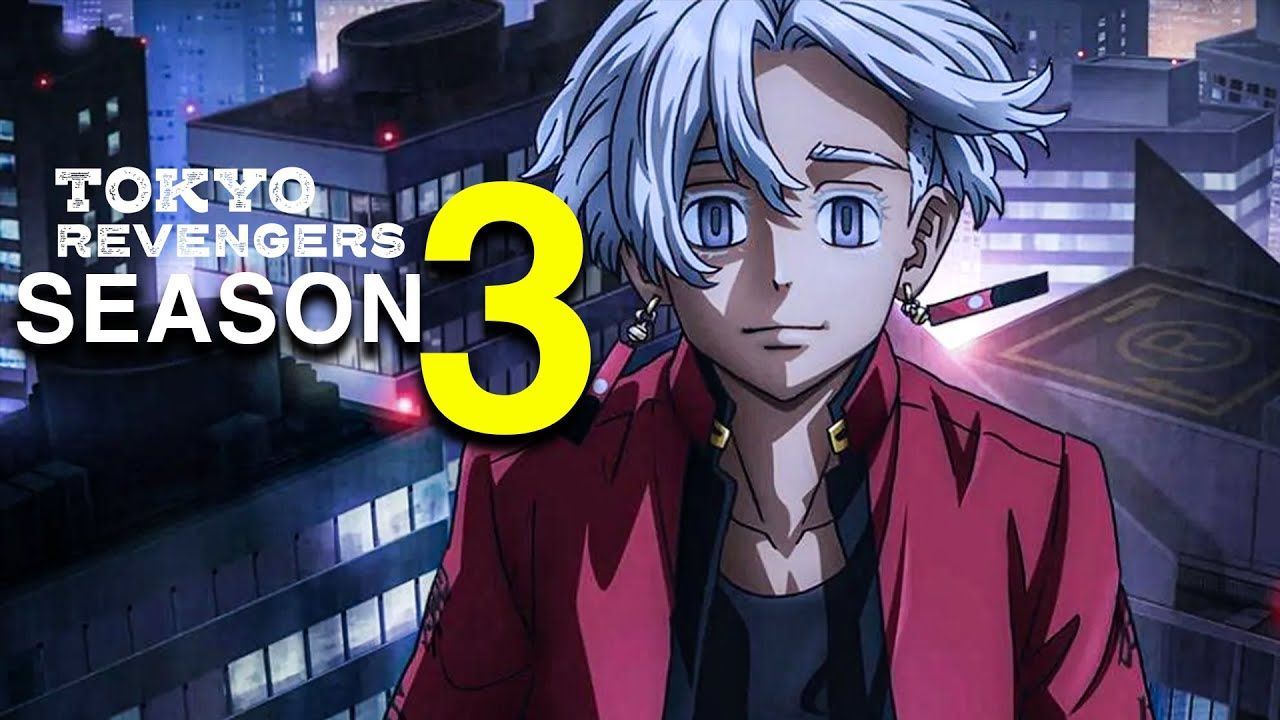
Visually, the anime adaptation of “Tokyo Revengers” is dynamic and well-animated, effectively capturing the gritty urban setting and intense emotions of the characters. The character designs are distinct, and the animation quality remains consistent throughout the series. The soundtrack, composed by Hiroaki Tsutsumi, complements the tone of each scene, heightening the emotional impact of key moments.
Tokyo Revengers has received positive reviews from both fans and critics alike, praised for its compelling storyline, memorable characters, and thematic depth. The anime adaptation has contributed to the series’ popularity, attracting a growing fan base and generating interest in the original manga.
Tokyo Revengers” is a nice and emotionally resonant anime that blends elements of time travel, crime drama, and coming-of-age themes. With its engaging plot, well-rounded characters, and intense action sequences, the series offers a satisfying viewing experience for fans of shonen anime. Whether you’re drawn to complex narratives or heartfelt character dynamics, “Tokyo Revengers” delivers an exciting and thought-provoking journey through the streets of Tokyo and the complexities of youth and redemption.
2. Puella Magi Madoka Magica
While renowned primarily for its dark magical girl theme, Puella Magi Madoka Magica also incorporates significant time travel elements, particularly through the character Homura Akemi. Following her failure to protect Madoka Kaname from a grim fate, Homura’s unique ability enables her to rewind time in a desperate attempt to prevent the tragedy from unfolding.
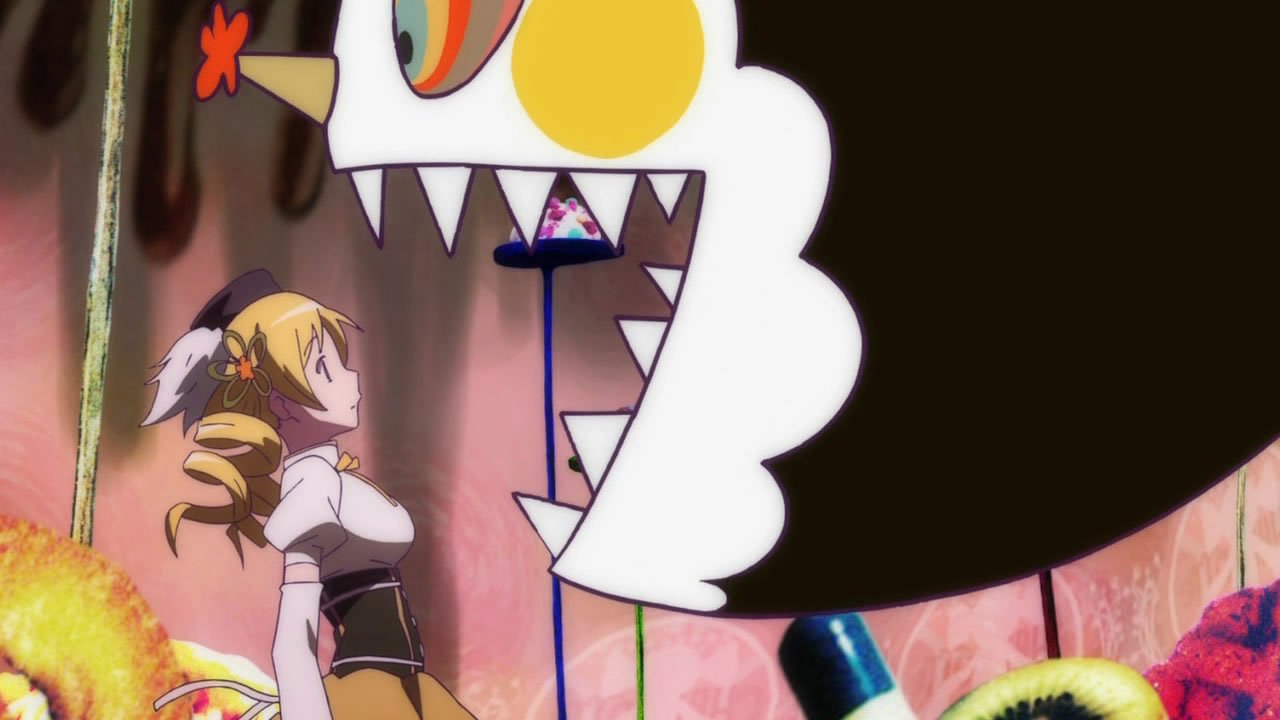
This intricate narrative structure forms a compelling time loop, wherein Homura repeatedly ventures back in time, striving to alter events and avert disaster, only to bear witness to Madoka’s suffering in different iterations.
It is Homura’s poignant perseverance through these harrowing time jumps that imbues Madoka Magica with its profound emotional depth, offering audiences a nuanced exploration of her motivations and inner turmoil. As a result, Puella Magi Madoka Magica stands out as a formidable entry in the time travel anime, weaving together themes of sacrifice, determination, and the relentless pursuit of salvation.
“Puella Magi Madoka Magica” is a groundbreaking Japanese anime series produced by Shaft and Aniplex, directed by Akiyuki Shinbo and written by Gen Urobuchi. Originally airing in 2011, this 12-episode series subverts the magical girl genre, presenting a dark and psychologically intense narrative that has left a lasting impact on viewers worldwide.
The story follows Madoka Kaname, a kind-hearted middle school girl who encounters a mysterious transfer student named Homura Akemi and a small creature named Kyubey. Kyubey offers Madoka and her friend, Sayaka Miki, the opportunity to become magical girls and fulfill their deepest wishes in exchange for fighting witches, supernatural creatures that threaten humanity.
However, as Madoka learns more about the risks and sacrifices involved in becoming a magical girl, she becomes entangled in a web of despair and existential dilemmas. Alongside her friends, Madoka grapples with the harsh realities of their newfound roles, confronting themes of mortality, morality, and the consequences of power.
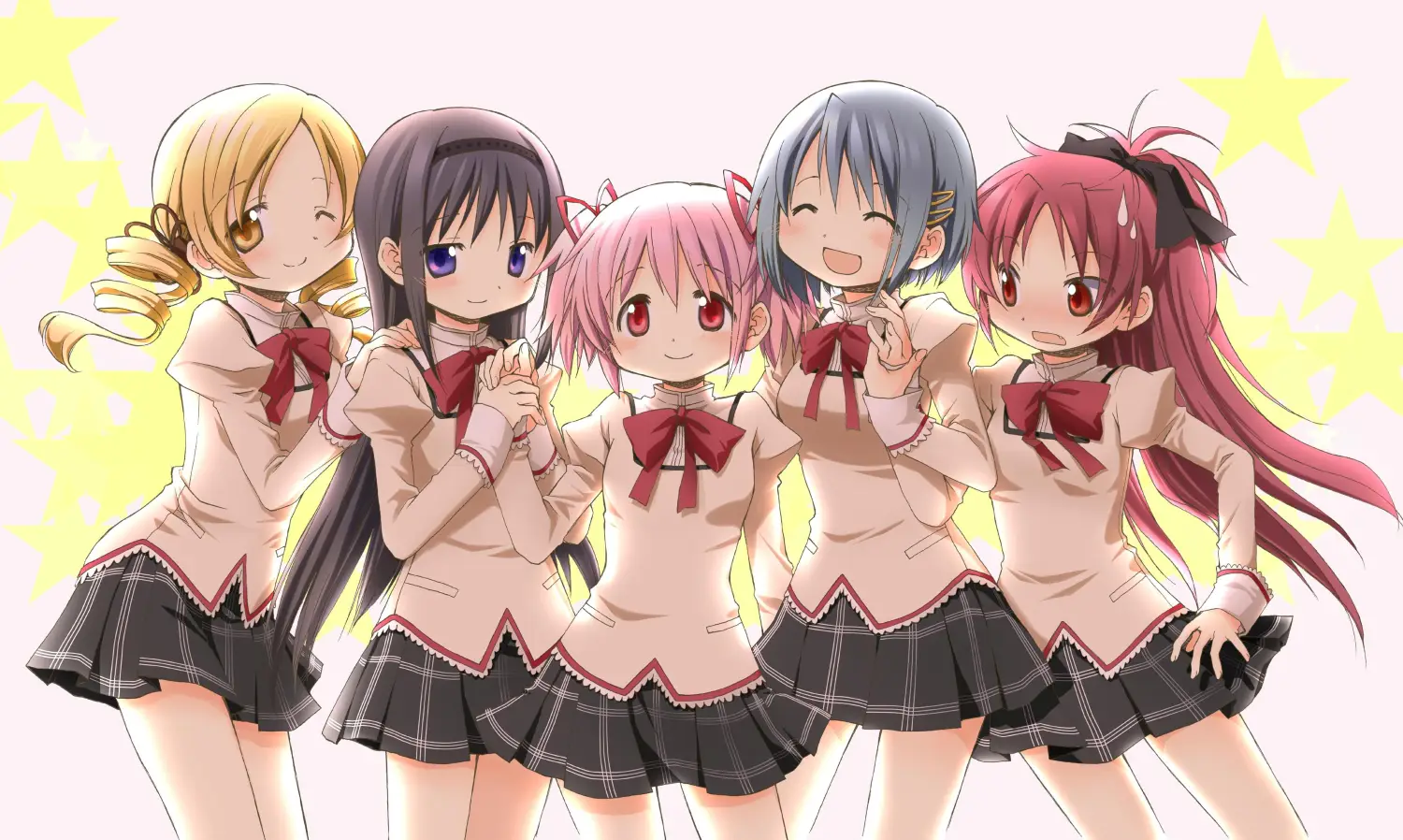
Madoka Magica explores themes of sacrifice, despair, and the nature of heroism. The series challenges the traditional magical girl tropes by going into the psychological and emotional toll of battling supernatural forces. Each character undergoes profound development, with their wishes and motivations driving the narrative toward a gripping and introspective conclusion.
The motif of entropy and inevitability pervades the storyline, emphasizing the transient nature of existence and the relentless march of fate. The series presents a thought-provoking examination of hope and despair, questioning the cost of pursuing one’s desires in a world filled with darkness.
The characters in “Madoka Magica” are complex and multifaceted, defying stereotypes associated with the magical girl genre. Madoka herself undergoes significant growth as she confronts the harsh realities of her choices and grapples with the consequences of her decisions. Homura Akemi’s mysterious backstory and unwavering determination add layers of intrigue and emotional depth to the narrative.
One of the standout features of “Madoka Magica” is its striking art direction and animation. The series employs a unique visual style characterized by avant-garde design elements, abstract imagery, and symbolic motifs. The transformation sequences and witch battles are rendered with surreal and mesmerizing animation, enhancing the series’ dark and atmospheric tone.
The haunting and atmospheric soundtrack composed by Yuki Kajiura complements the series’ emotional depth and thematic complexity. The use of choral arrangements and melancholic melodies heightens the drama and tension of key moments, contributing to the overall immersive experience.
Puella Magi Madoka Magica received widespread critical acclaim and has become a cult favorite among anime enthusiasts. The series was lauded for its innovative storytelling, bold visual presentation, and thought-provoking themes. “Madoka Magica” has since inspired numerous spin-offs, films, and merchandise, solidifying its legacy as a seminal work within the magical girl genre.
Puella Magi Madoka Magica is a thought-provoking and emotionally resonant anime that defies expectations and challenges the conventions of its genre. With its amazing narrative, complex characters, and stunning visual aesthetics, the series offers a nice exploration of human desires and the price of pursuing power. Whether you’re a fan of dark fantasy or character-driven drama, “Madoka Magica” delivers a compelling and unforgettable viewing experience that continues to grabes audiences with its timeless themes and artistic vision.
1. Buddy Complex
In Buddy Complex, mecha pilot Aoba experiences a sudden and disorienting leap from the future into the midst of a battlefield set one year in the past. There, he forms an unlikely alliance with student soldier Dio, as they join forces to pilot the formidable Buddy Complex robot. Their burgeoning friendship becomes the cornerstone of their collaboration, as they synchronize their fighting techniques across the temporal divide.

Amidst Aoba’s struggle to find a way back to his original timeline, he and Dio find themselves embroiled in a complex temporal conflict, fraught with devastating secrets that threaten their shared future. Buddy Complex seamlessly blends classic mecha action with intricate time-travel twists throughout its 13 episodes, offering viewers a thrilling and immersive experience.
This anime series is characterized by its stunning mecha animation sequences, which expertly highlight the synchronized combat maneuvers executed by the two main characters, Aoba and Dio. Through its dynamic storytelling and fascinating visuals, Buddy Complex emerges as a standout entry in the genre of time travel anime.
“Buddy Complex” is a Japanese mecha anime series produced by Sunrise. Directed by Yasuhiro Tanabe, the anime aired in 2014 and consists of 13 episodes. “Buddy Complex” is known for its action-packed mecha battles, time-travel elements, and themes of friendship and loyalty.
The story follows Aoba Watase, a high school student who finds himself transported from the year 2014 to the future, specifically the year 2088. In this future world, Earth is embroiled in a war between two factions: the Free Pact Alliance and the Zogilia Republic. During a battle, Aoba encounters a powerful mecha called Valiancer and its pilot, Dio Junyou Weinberg.
After a series of events, Aoba becomes involved in the conflict and pilots his own Valiancer to fight alongside Dio and his comrades in the Free Pact Alliance. As Aoba adapts to this unfamiliar future and navigates the complexities of war, he forms close bonds with his fellow pilots and learns the truth behind the mysterious time-travel phenomenon.

Buddy Complex explores themes of teamwork, camaraderie, and the impact of choices made in times of conflict. The series emphasizes the importance of mutual trust and support among allies, highlighting the bonds that form between individuals facing adversity together.
The motif of time travel serves as a narrative device to explore the intersection of past and future, as well as the consequences of altering the course of history. Aoba’s journey through time enables him to gain new perspectives on life and relationships, ultimately shaping his growth as a character.
The series features exhilarating mecha battles with impressive animation and choreography. The Valiancers, piloted by the main characters, engage in dynamic combat sequences against enemy forces, showcasing a variety of weapons and combat techniques. The action-packed scenes add excitement and intensity to the storyline.
While “Buddy Complex” primarily focuses on mecha battles and action, it also incorporates character development and interpersonal relationships. Aoba’s interactions with Dio and other members of the Free Pact Alliance allow for moments of introspection and growth, as he learns to trust his comrades and confront his own fears.
Visually, Buddy Complex features detailed mecha designs and fluid animation during combat scenes. The character designs are distinct and expressive, capturing the personalities of each pilot. The soundtrack, composed by Tatsuya Katou, complements the series with epic and energetic musical scores that enhance the excitement of battle sequences.
Buddy Complex received a generally positive reception from viewers, particularly fans of mecha anime. While the series was praised for its thrilling action and well-animated battles, some critics noted that the plot and character development could be predictable at times. Despite this, “Buddy Complex” remains a solid entry in the mecha genre, appealing to audiences looking for intense mecha combat and themes of friendship.
Buddy Complex is an entertaining mecha anime that delivers thrilling action, dynamic mecha battles, and themes of camaraderie and loyalty. While it may not break new ground in terms of narrative complexity, the series offers an enjoyable viewing experience for fans of mecha and sci-fi anime. If you’re looking for adrenaline-pumping battles and mecha-driven excitement, “Buddy Complex” is worth checking out for its well-executed action sequences and engaging character dynamics.
Memes of the Day
Tenioha! 2: Limit Over – Mada Mada Ippai, Ecchi Shiyo?
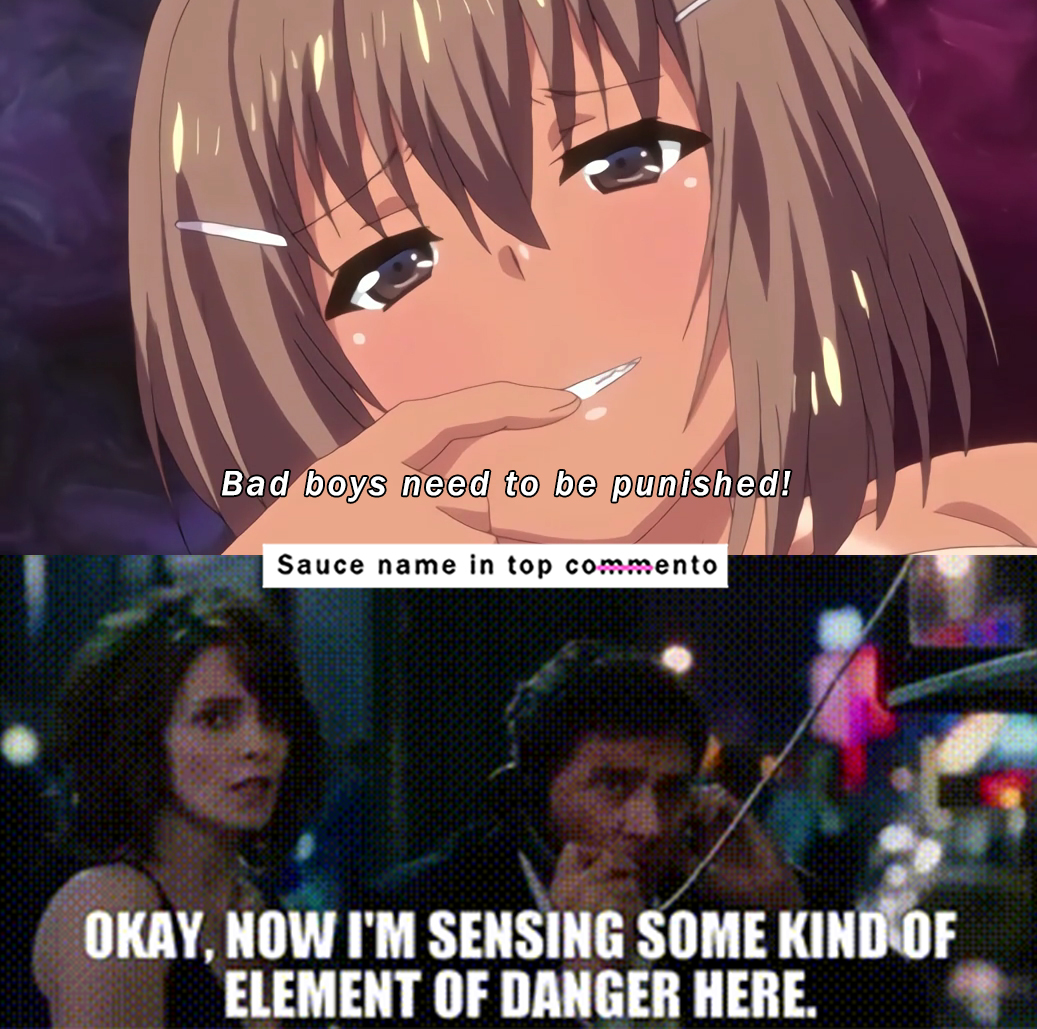
Yue – Kao wa Sokkuri nanoni Karada wa Sorezore Chigau Houkou ni Seichoushita Osananajimi no Futago-chan

Sauce: HFox | 33434
Lust Alert ~New Strain Rampage
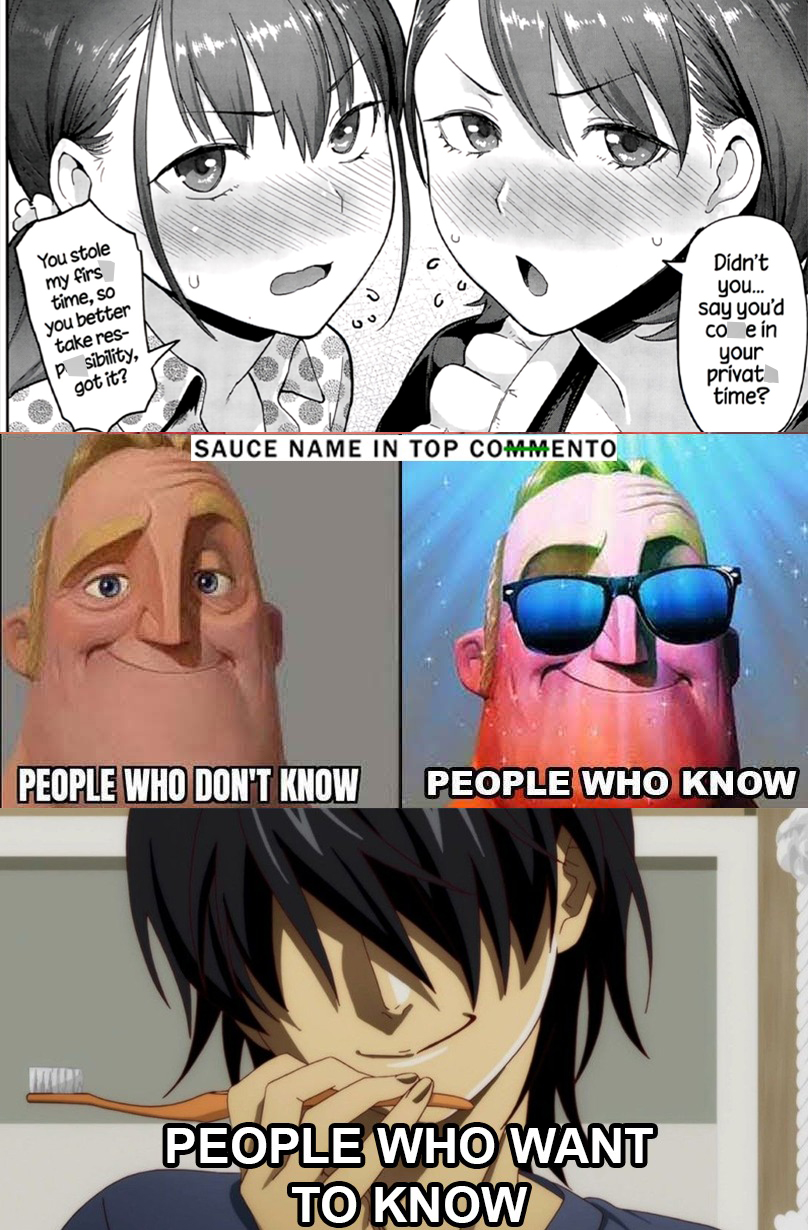
Kemuri Haku — Ikura De Yare Masuka?

Nocturnal

Caffeine

Pixiv – 118963635
